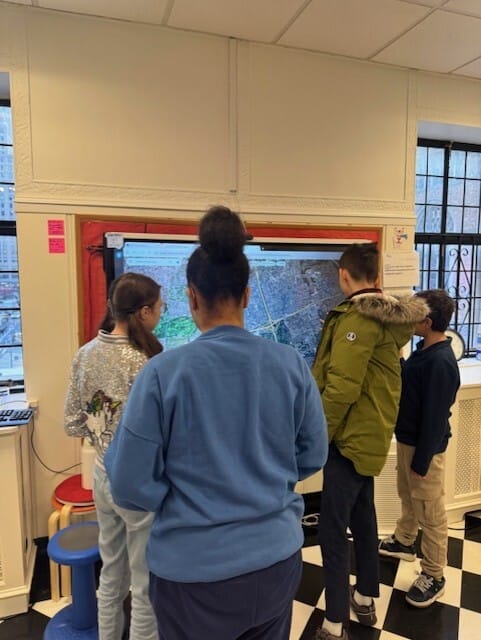- The CA Voice
- Posts
- January 2025: Let It Snow
January 2025: Let It Snow

A newsletter brought to you by the Speech Department at Children’s Academy
In this newsletter:
January 2025
Let It Snow
In January, our lower school students explored all things SNOW in their language skills and social group! Upper schoolers continued to work on building peer relationships and self-advocacy in a weekly school-wide lunch group.
 Snowball fight! |  An angelic moment |

From zero to ice rink in record time!
 We love a girl boss |  Mapping it out |  Striking the right chord |
 Stopping by (benches) on a snowy (afternoon) |  Never too cold for ice cream |
SLP Spotlight: Olivia Thorson
 Olivia Thorson, CCC-SLP | Olivia Thorson started at CA in 2024. She currently works primarily with 6th/7th grade, but she has previously worked with children ages 3-21 in private practice and academic settings. Olivia's areas of interest and expertise are Augmentative and Alternative Communication (AAC), speech sound disorders, and supporting gestalt language processors. She is especially passionate about supporting students' pragmatic language skills across the school day in addition to targeting speech therapy goals while engaging in fun, motivating, and meaningful activities. |
Her favorite part about working at Children's Academy is how seamlessly the collaboration with other professionals happens and how much time she spends with her homeroom team and students. When she's not at work, Olivia likes to go on long walks with her dog, attend barre class, cook, sing/play the guitar with her brother, and travel with her family.
Topics in Speech-Language Pathology: Self-Advocacy
Self-advocacy — the ability to understand and express one’s own needs—is something that is on the mind of all CA from the moment students enter the building, until the moment they leave. When children can effectively communicate their thoughts, ask for help, and express their preferences, they gain confidence and independence in social and academic settings. |  |
You may have noticed self-advocacy skills on your child’s speech and language goal sheets. SLPs work with students to improve their ability to articulate needs, use appropriate social communication, and navigate real-life situations. For younger children, this might mean a simple protest (“no”), which is honored as often as possible, or practicing short phrases like “I need a break.” Older children may work on their self-awareness skills, developing an understanding of what supports work best for them. Once they gain a better grasp of this, they may be able to explain their challenges or feelings to teachers and peers and request help or accommodations, such as extra time to respond or the use of visual aids.
Parents can encourage self-advocacy at home by modeling clear communication, validating their child’s feelings, and giving them opportunities to make choices. Role-playing common situations, such as ordering food or asking for directions, can also build confidence.
See more specific tips in the “Do it at home” section below!
Overheard at CA
 | While playing a matching game in Social Group… Sachin: Hey guys, can we let Alexander get a match because he doesn’t have one yet? Sachin is a 9-year-old verbal communicator and budding peer advocate. 😄 |
Do it at home: Build Self-Advocacy
Here are a few concrete ways to build your child’s self-advocacy skills at home.
|  |
Encourage Choice-Making
Give your child opportunities to make decisions throughout the day, such as choosing their outfit, snack, or activity. This helps them learn to express preferences and builds confidence in their ability to communicate needs.Practice Problem-Solving Scenarios
Use social stories or role-play to walk through different situations where they might need to speak up—for example, asking for a break at school, ordering at a restaurant, or explaining their communication needs to a teacher.Model and Reinforce Self-Advocacy
Narrate your own self-advocacy moments, such as politely asking for assistance or setting a boundary. Praise your child when they attempt to advocate for themselves, reinforcing their efforts with positive feedback.Use Visual Supports and Scripts
Create visual cues or written scripts to help your child remember what to say in certain situations. For example, a small card with key phrases or images can be carried in their pocket as a communication aid.Wait
This is often the most challenging part. Rather than anticipating your child’s needs, wait until they come to you. Provide tons of models and opportunities, (e.g. handing them a closed container knowing they will need help opening it) and provide a simple declarative language prompt if necessary (e.g. it looks like you might need help!).